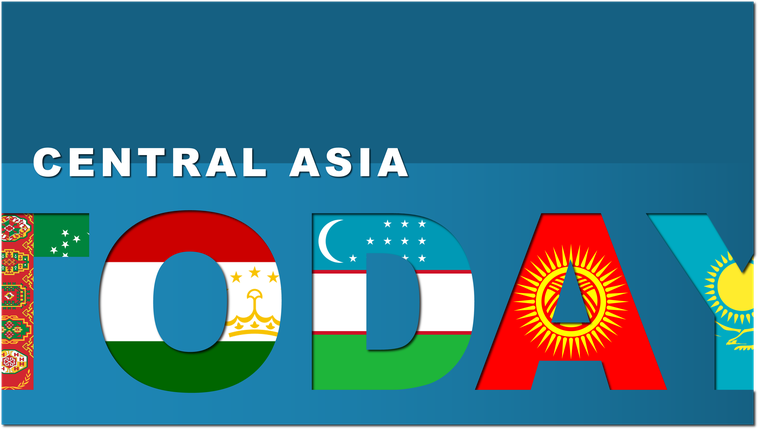Central Asia

Once at the heart of the ancient Silk Road connecting East and West, Central Asia remains a critical bridge between major global powers. Bordered by Russia to the north, China to the east, and Iran and Afghanistan to the south, the region’s geography lends it growing geopolitical and economic significance due to its vast energy resources, youthful population, and increasingly active role in international alliances. United by the Persian suffix -stan, meaning “land” or “place”, the five countries—Kazakhstan, Kyrgyzstan, Uzbekistan, Turkmenistan, and Tajikistan—literally translate to “the land of the Kazakhs”, “the land of the Uzbeks”, and so on.
Covering over 4 million square kilometres, the region is home to more than 78 million people and is characterised by diverse ethnic groups, languages, and traditions shaped by millennia of migration, conquest, and cultural exchange. Turkic languages have largely replaced the Iranian languages historically spoken across much of the region, except in Tajikistan and areas where Tajik, a variety of Persian, is prevalent. Among the most enduring cultural celebrations is Nowruz, observed annually around 21 March. With Persian roots, Nowruz means “new day” and marks the spring equinox, symbolising renewal, prosperity, and unity. Recognised by UNESCO as part of the world’s intangible cultural heritage, Nowruz reflects the region’s ancient yet vibrant identity.
The region’s cultural-historical connections extend beyond its borders. The iconic ivory-white marble mausoleum, the Taj Mahal in India, was commissioned by Mughal Emperor Shah Jahan, whose ancestors hailed from Central Asia, specifically Uzbekistan’s Fergana Valley. The Mughal dynasty itself traces its roots to Timur (Tamerlane), the 14th-century conqueror from Samarkand. Moreover, the Taj Mahal’s architectural inspirations are drawn from Timurid and Mughal buildings, including the Gur-e Amir mausoleum in Samarkand—the resting place of Timur.

Despite a shared heritage, each country has taken a distinct path since gaining independence following the Soviet Union’s dissolution in 1991. Today, the five nations exhibit varying levels of socio-economic development, shaped by factors such as population structure, resource wealth, governance, and ongoing reforms.
Among the five, Kazakhstan stands out, spanning 2.7 million square kilometres, making it the world’s largest landlocked country by area. Meanwhile, Uzbekistan is the most populous, with over 37 million people, providing a significant labour force and a growing consumer market. Central Asia’s population is predominantly young, with more than half under the age of 30. This offers both a demographic dividend and considerable challenges for the labour market. Labour migration, particularly to Russia, remains significant, with remittances accounting for up to 30% of GDP in Kyrgyzstan and Tajikistan (World Bank, 2023).
As for natural resources, Central Asia is rich in hydrocarbons and minerals. Kazakhstan is the world’s largest uranium producer (World Nuclear Association, 2023) and a major exporter of oil and gas. Turkmenistan ranks among the top four countries globally in natural gas reserves (BP Statistical Review, 2023). These resources fuel regional economies and continue to attract significant foreign investment. Beyond oil and gas, Tajikistan—with its vast network of rivers, natural lakes, and glaciers—is ranked eighth globally for hydropower potential, estimated at 527 terawatt-hours (TWh) (International Energy Agency, 2023). This positions Tajikistan as one of the most promising future sources of clean energy.
Governance across the region is diverse, marked by varying degrees of authoritarianism and reform. Uzbekistan, under President Shavkat Mirziyoyev, is pursuing economic liberalisation and administrative reforms, opening the country to foreign investment. Kazakhstan, meanwhile, underwent a significant leadership transition in 2019 when President Nursultan Nazarbayev stepped down after nearly three decades in power and is now pursuing gradual decentralisation and anti-corruption initiatives. In contrast, recent constitutional changes in countries such as Tajikistan and Turkmenistan signal a continued centralisation of power.
Foreign policy in Central Asia is defined by a careful balancing act between major global powers:
- China leads as an economic partner, particularly through the Belt and Road Initiative (BRI) and energy projects.
- Russia remains a key player, providing security guarantees via the Collective Security Treaty Organization (CSTO) and maintaining economic ties through the Eurasian Economic Union (EAEU)—both Moscow-led structures.
- The European Union and the United States are expanding cooperation, focusing on energy diversification, education, and climate initiatives.
The region also engages actively in multilateral organisations such as the Shanghai Cooperation Organization (SCO), the Organization for Security and Co-operation in Europe (OSCE), and TURKSOY, reflecting its efforts to enhance both regional cohesion and global influence. Notably, TURKSOY promotes Turkic heritage and language, reinforcing soft power links within the region and beyond.

Education systems across Central Asia are undergoing reform, with efforts focused on modernising Soviet-era structures, improving quality, and expanding access. Kazakhstan investing in international scholarship programmes such as Bolashak. Meanwhile, Uzbekistan and Kyrgyzstan are expanding vocational training and digital skills. Literacy rates remain high (above 99.2%), providing a solid foundation for human capital development, though challenges persist in rural areas.
Efforts to diversify economies are also accelerating, with foreign investment growing in renewable energy, agriculture, and the digital sector.
Central Asia stands at a pivotal moment. Its natural resource wealth, youthful population, and strategic location offer immense potential for sustainable growth. According to the Asian Development Bank (2023), the region’s GDP growth is projected to remain steady at 4–5%, driven by energy exports, infrastructure expansion, and digital transformation. However, realising this potential will depend on continued governance reforms, investment in education, and stronger regional cooperation. As the global economic centre of gravity shifts, Central Asia’s role is set to grow—not only as an energy supplier but also as a dynamic economic, educational, and cultural hub on the world stage.
Muratbek Tolokov
